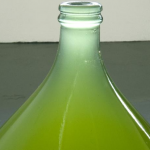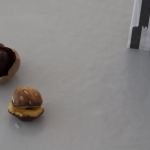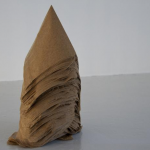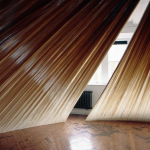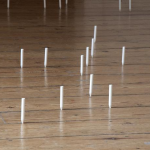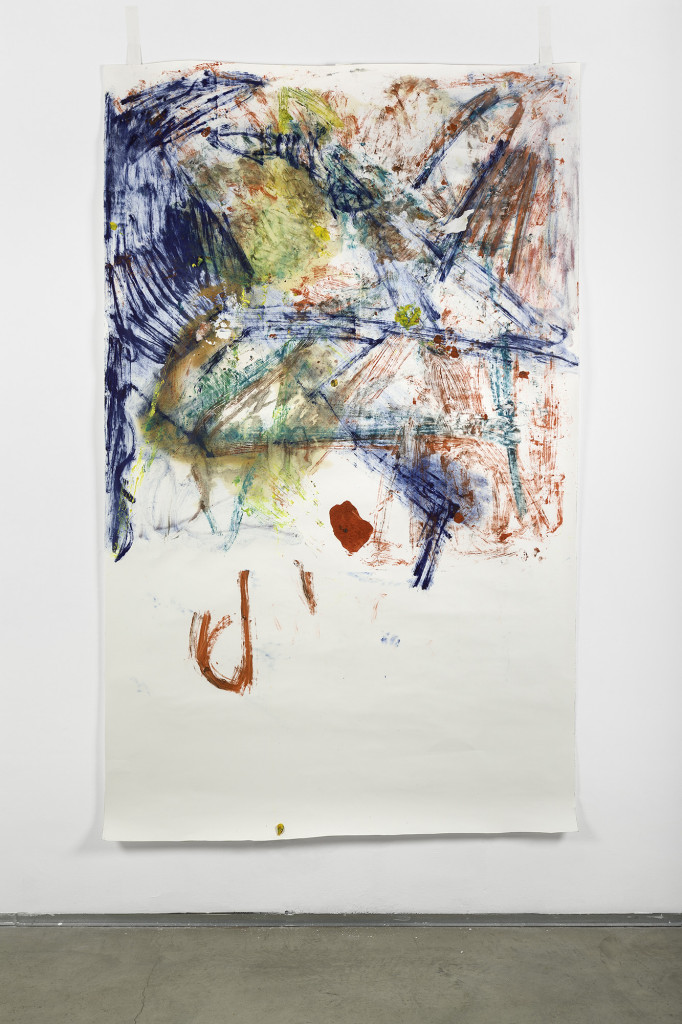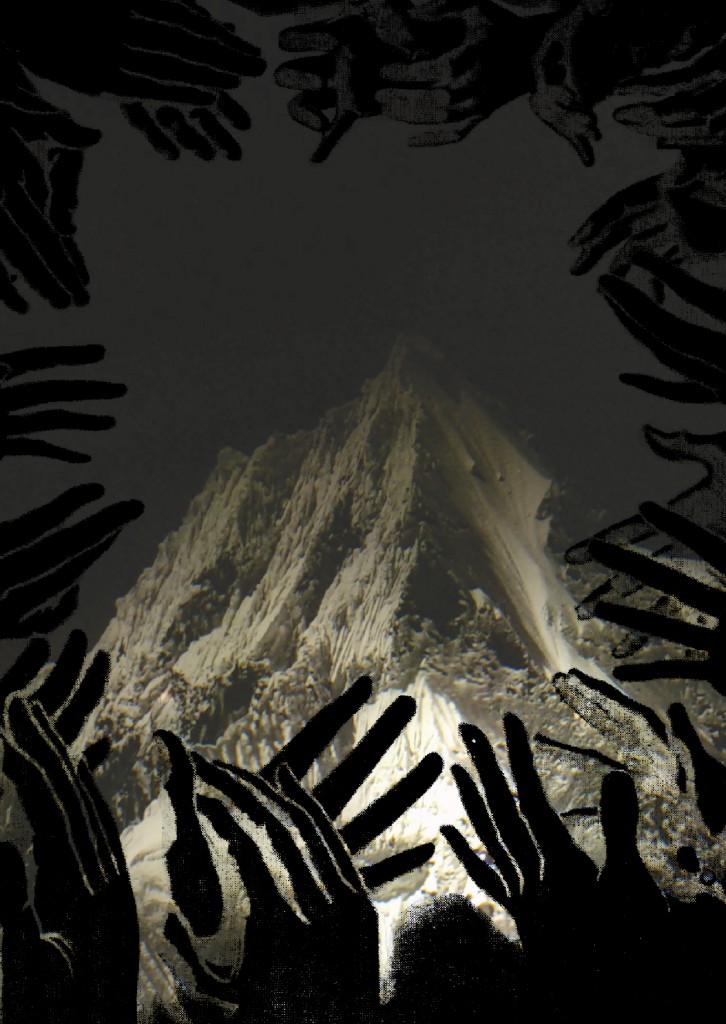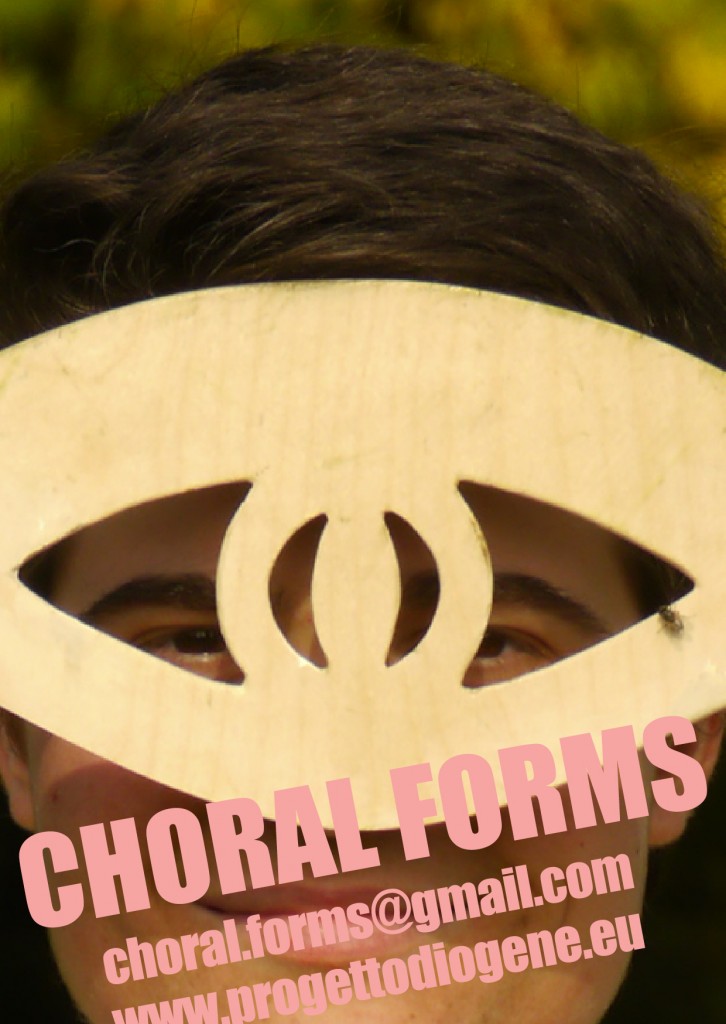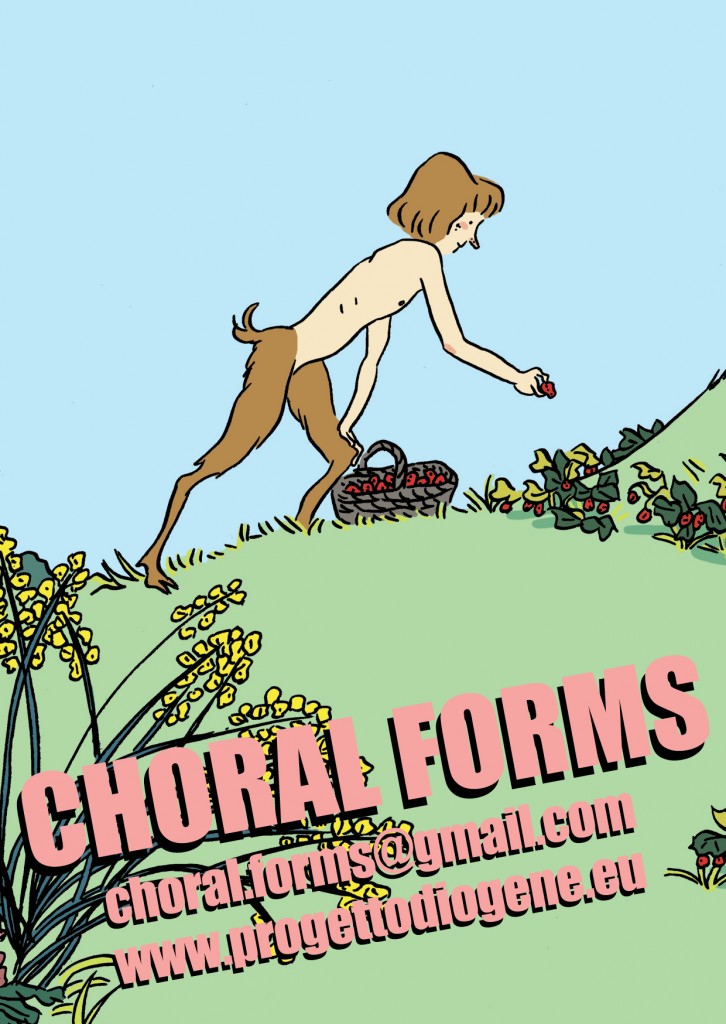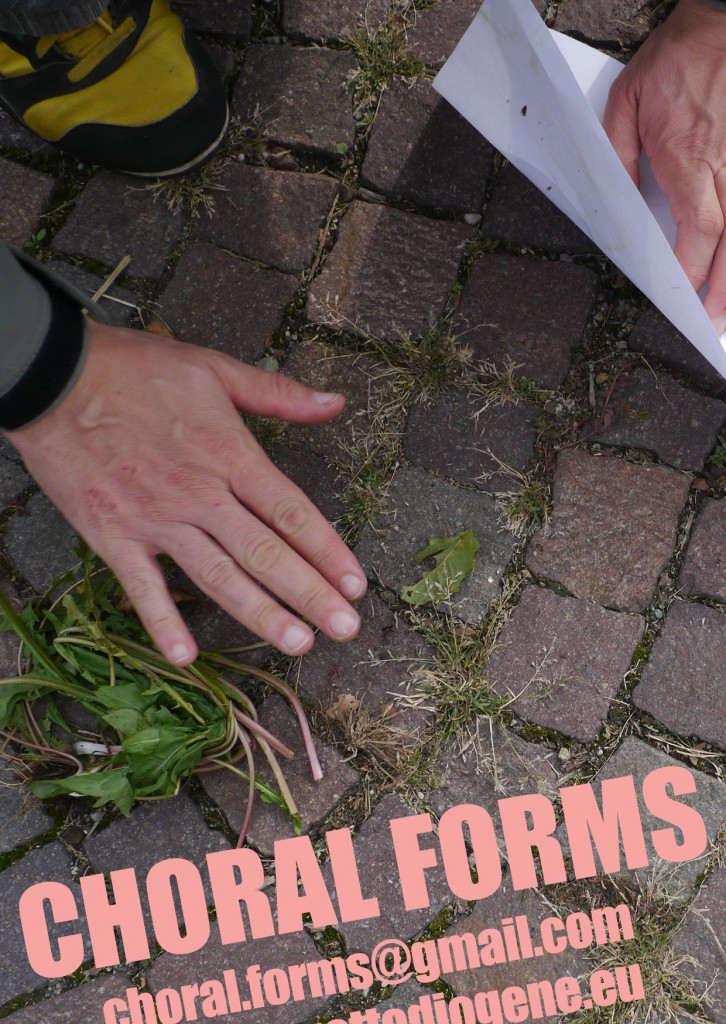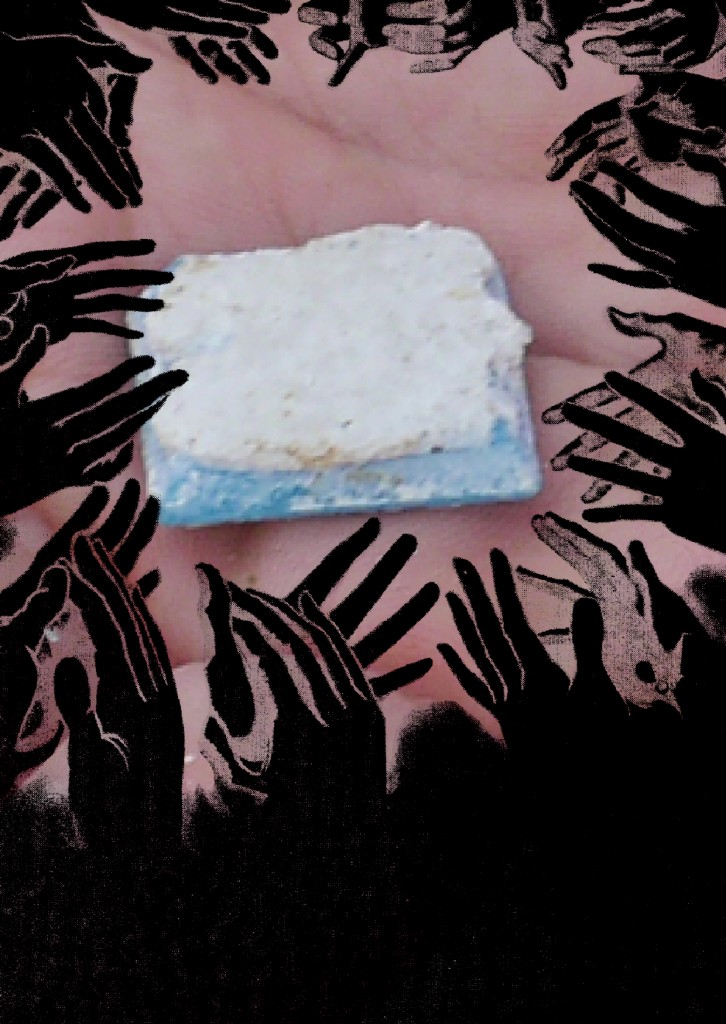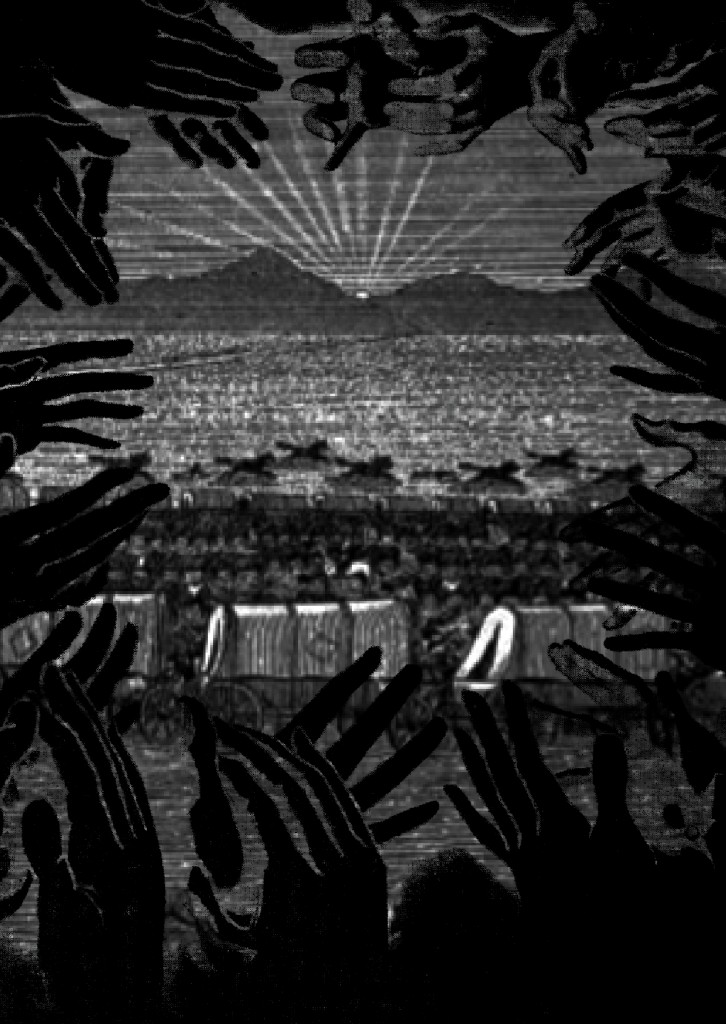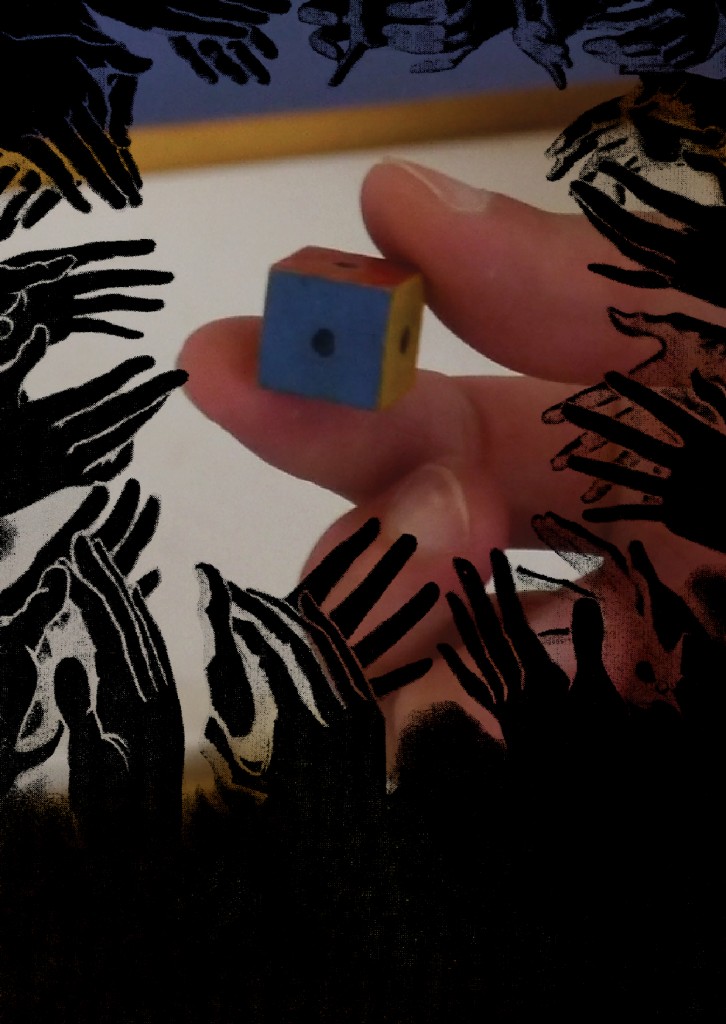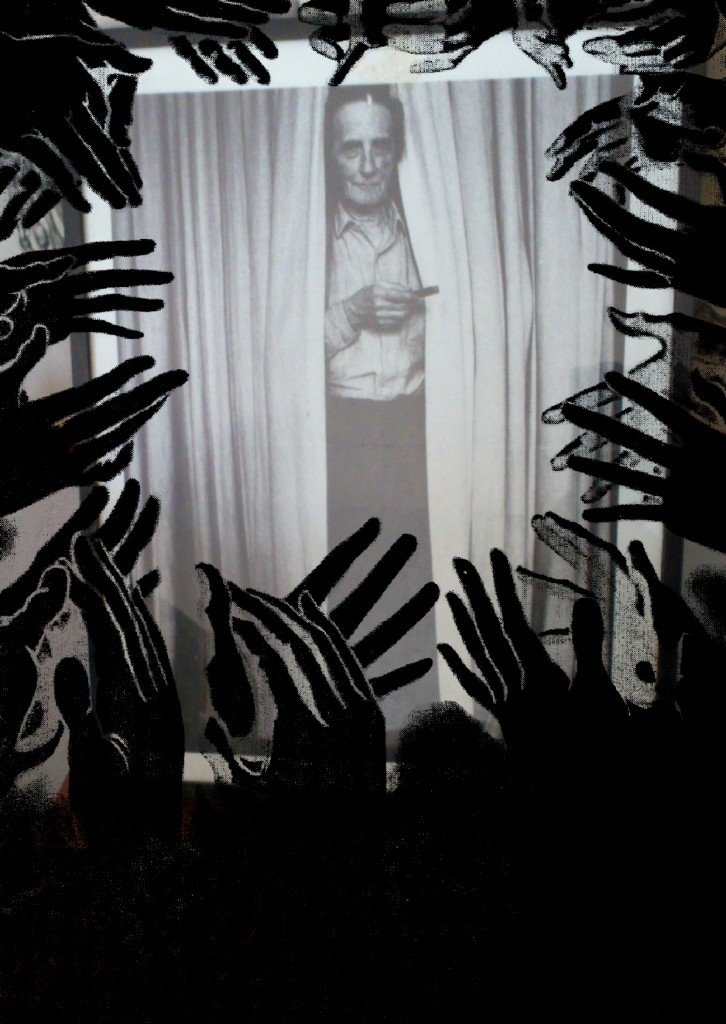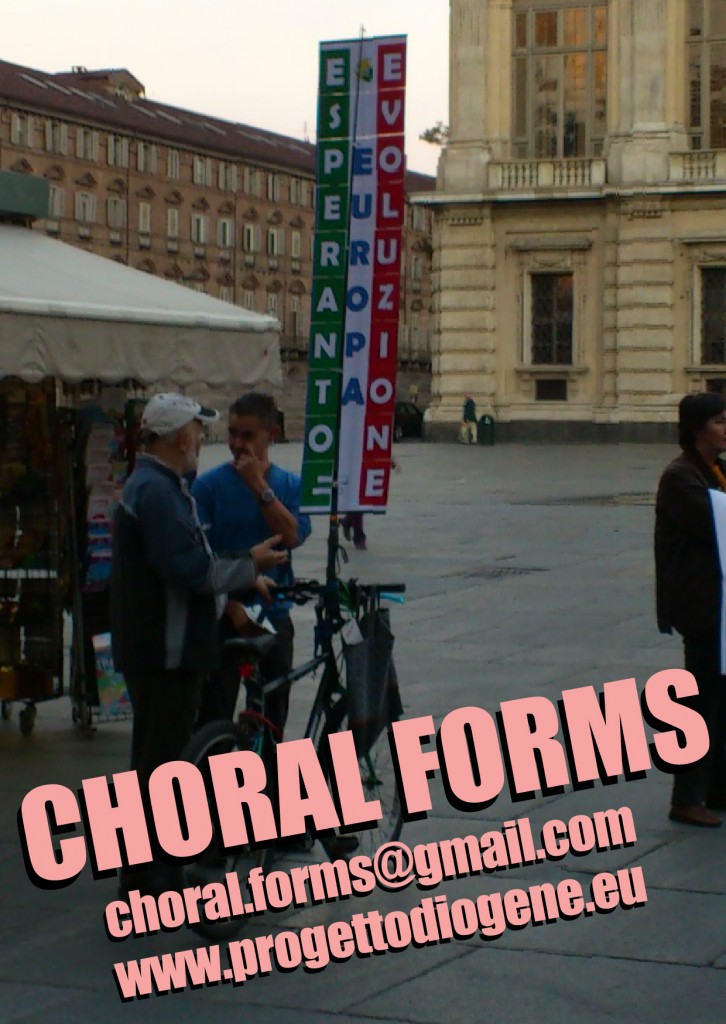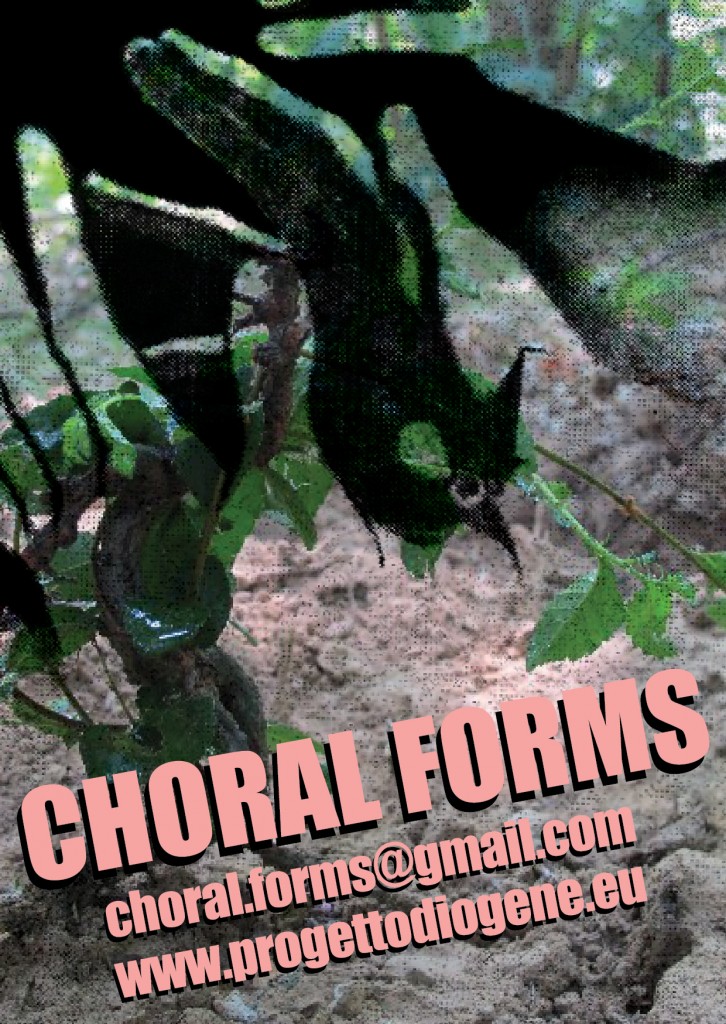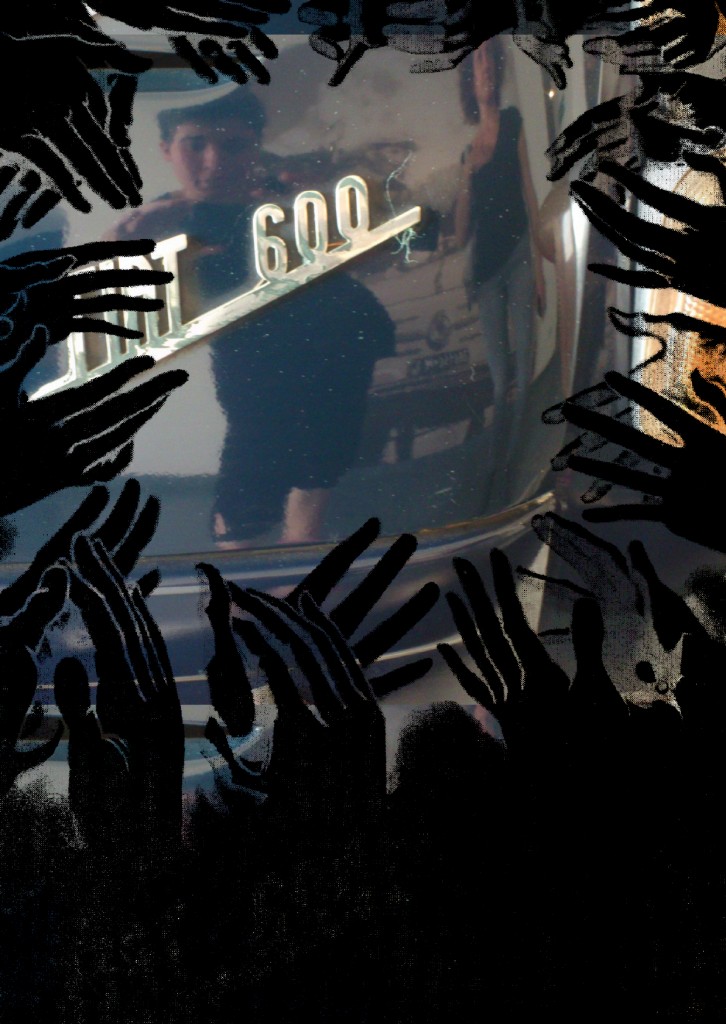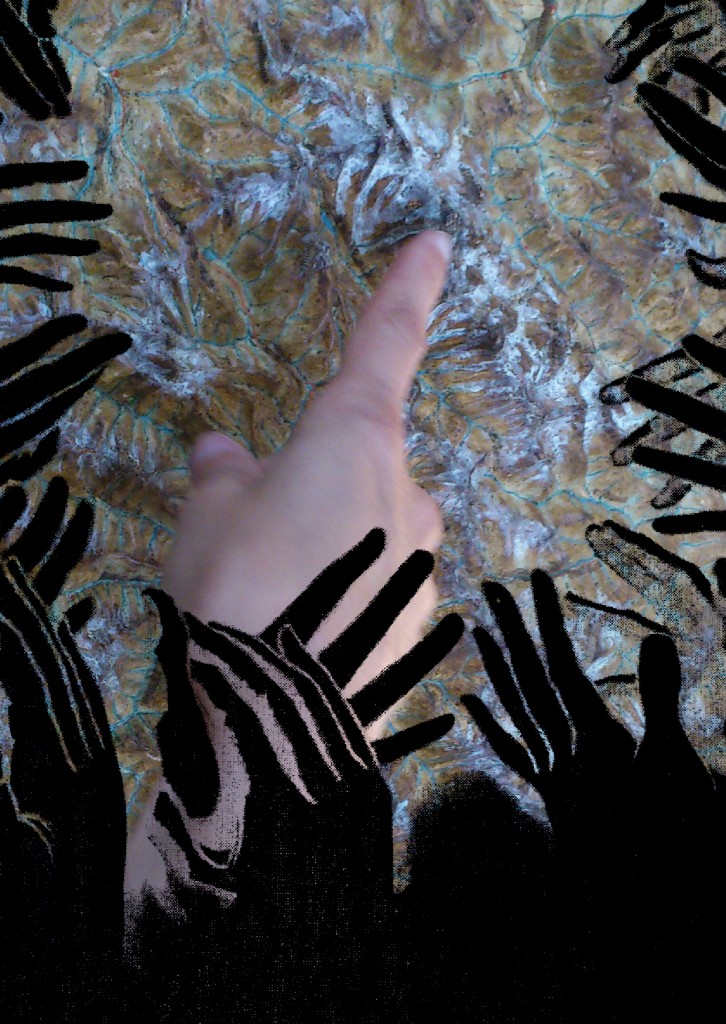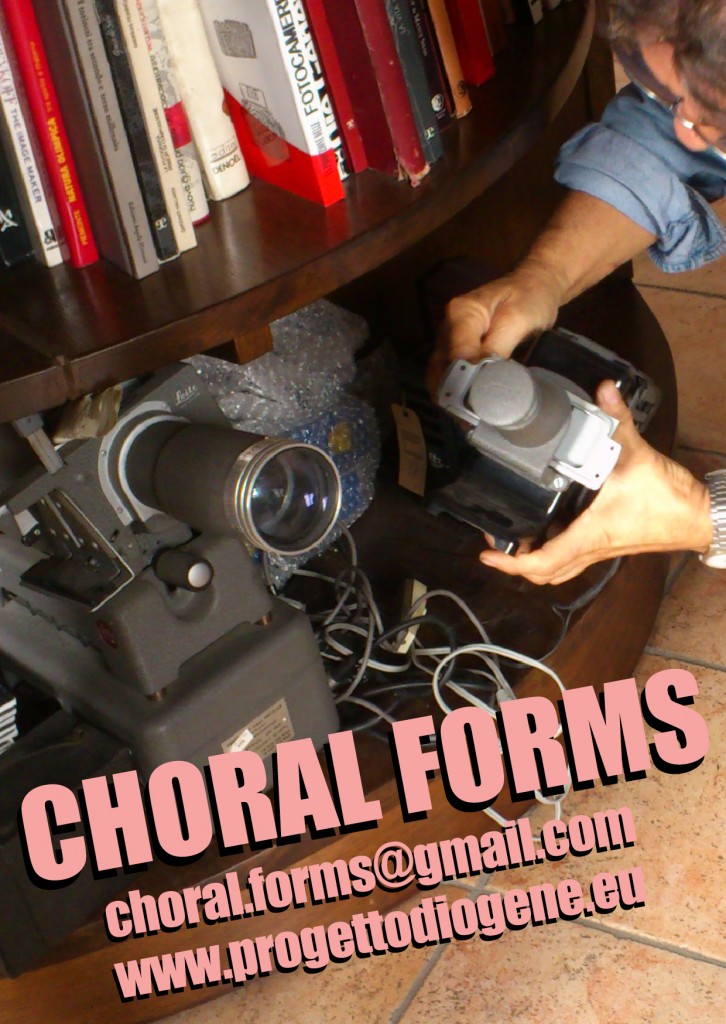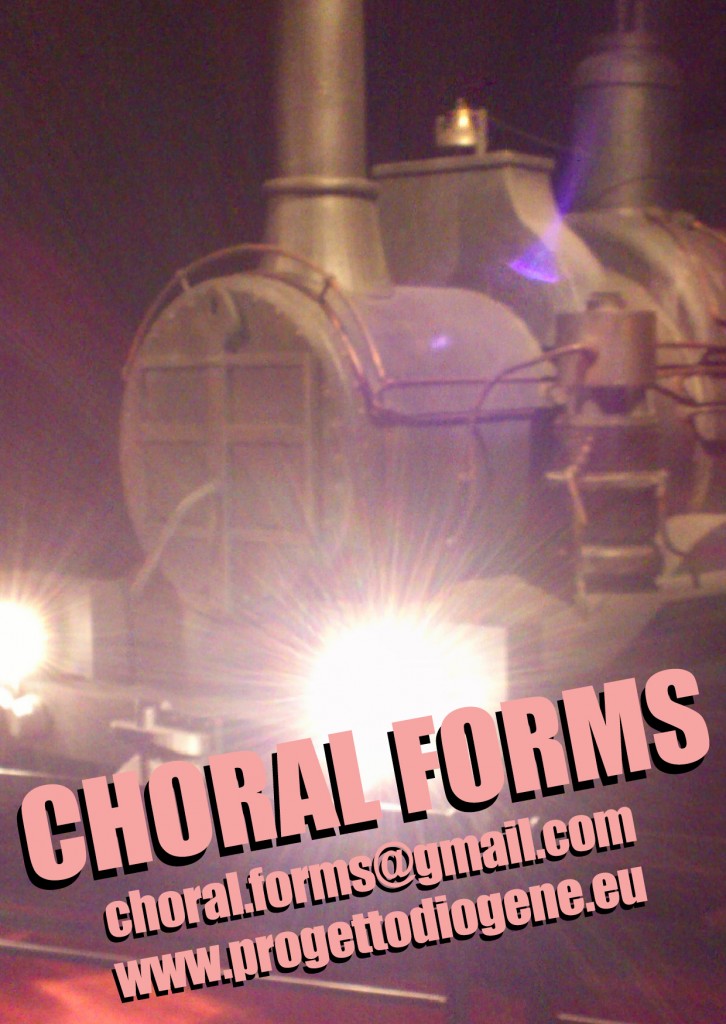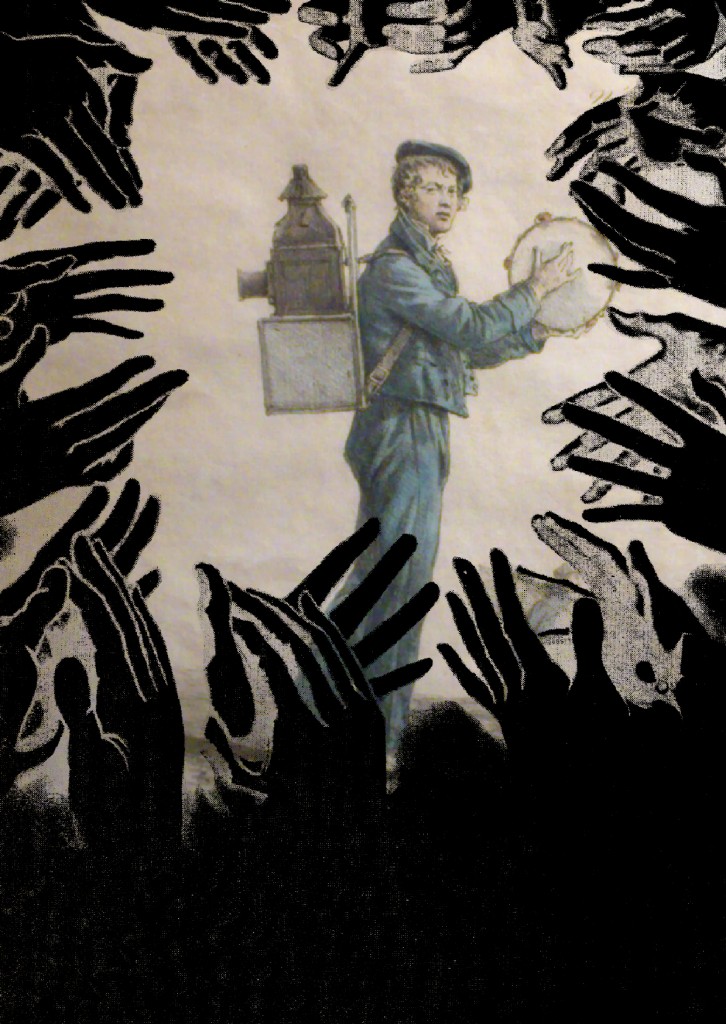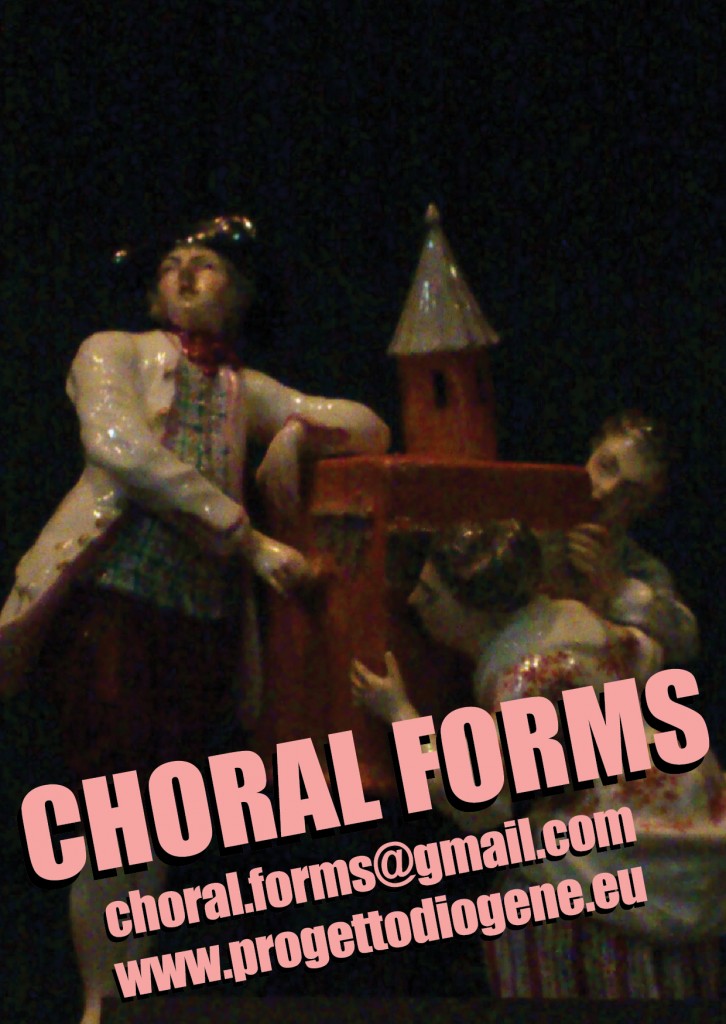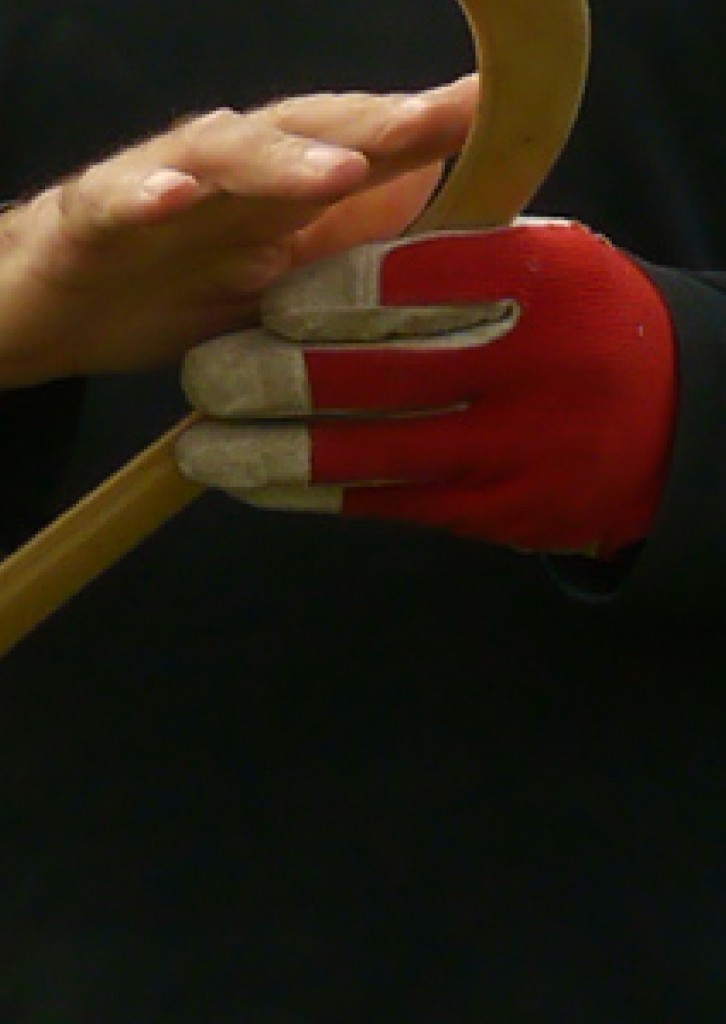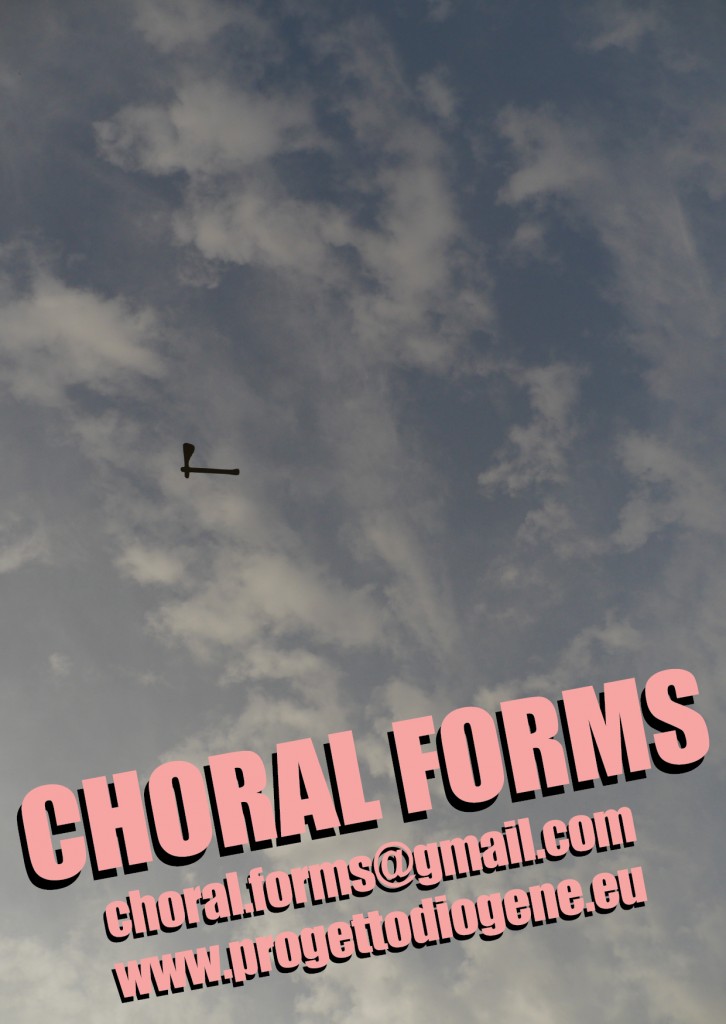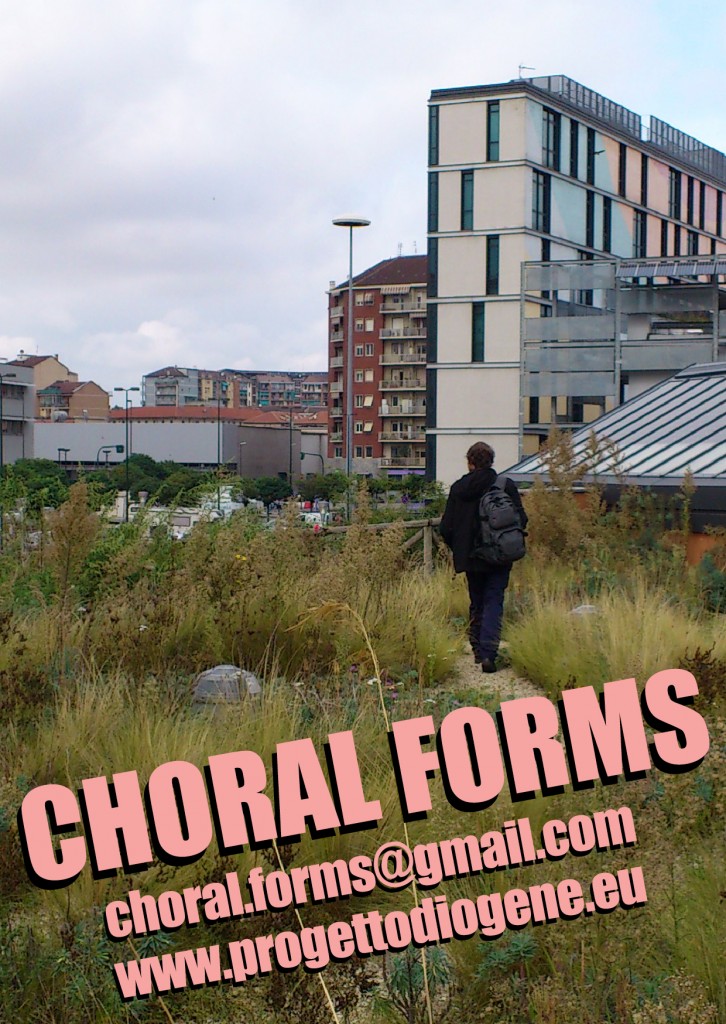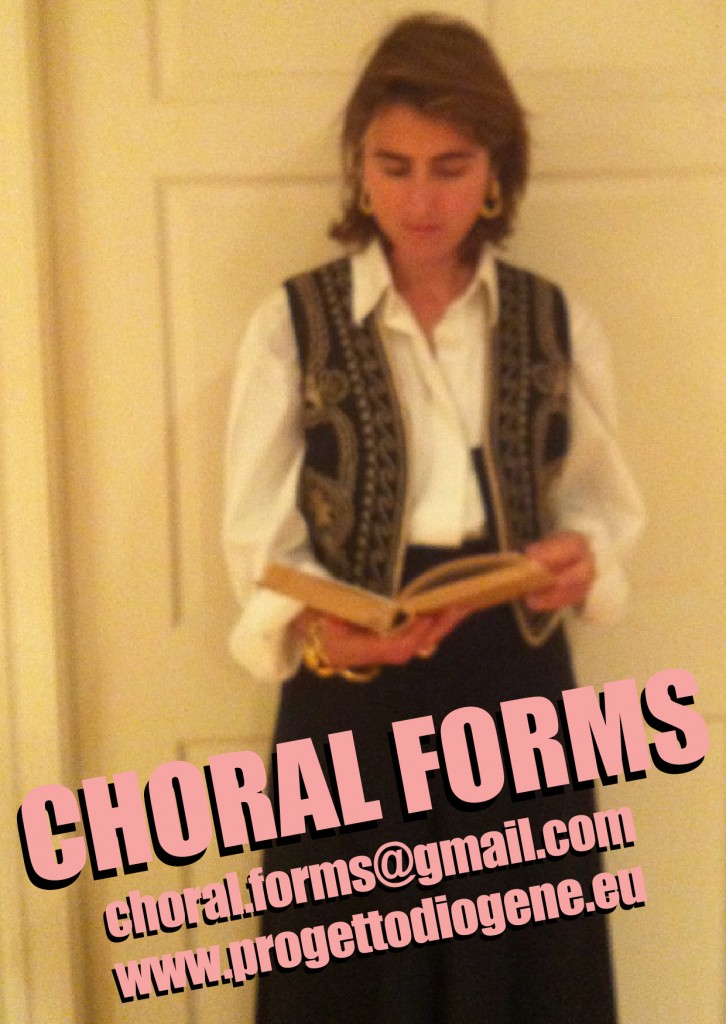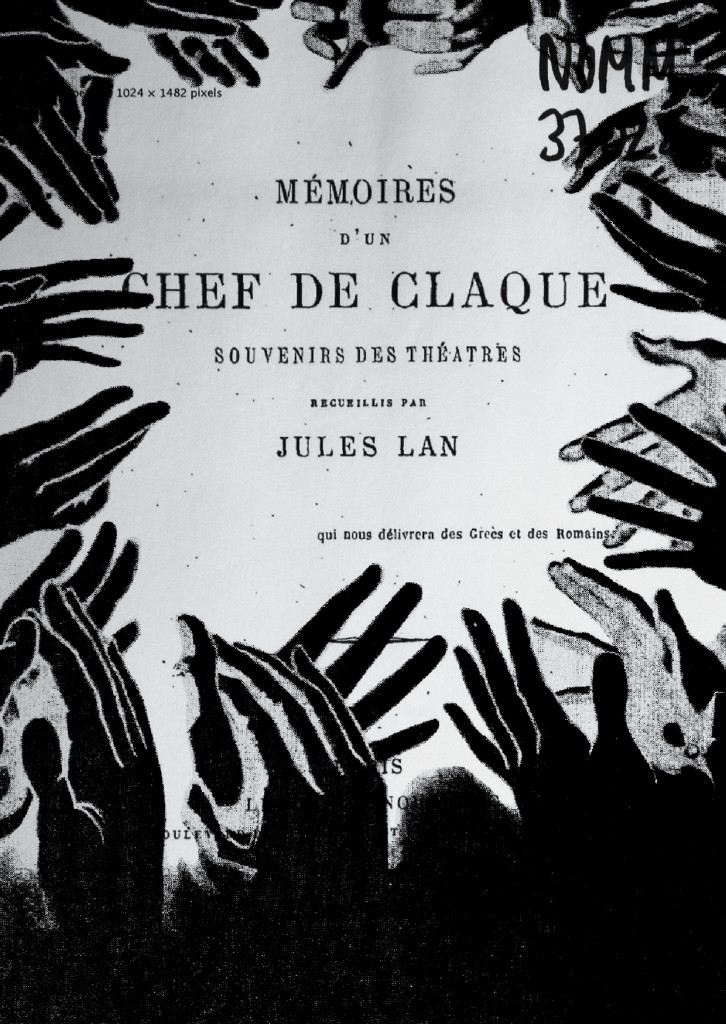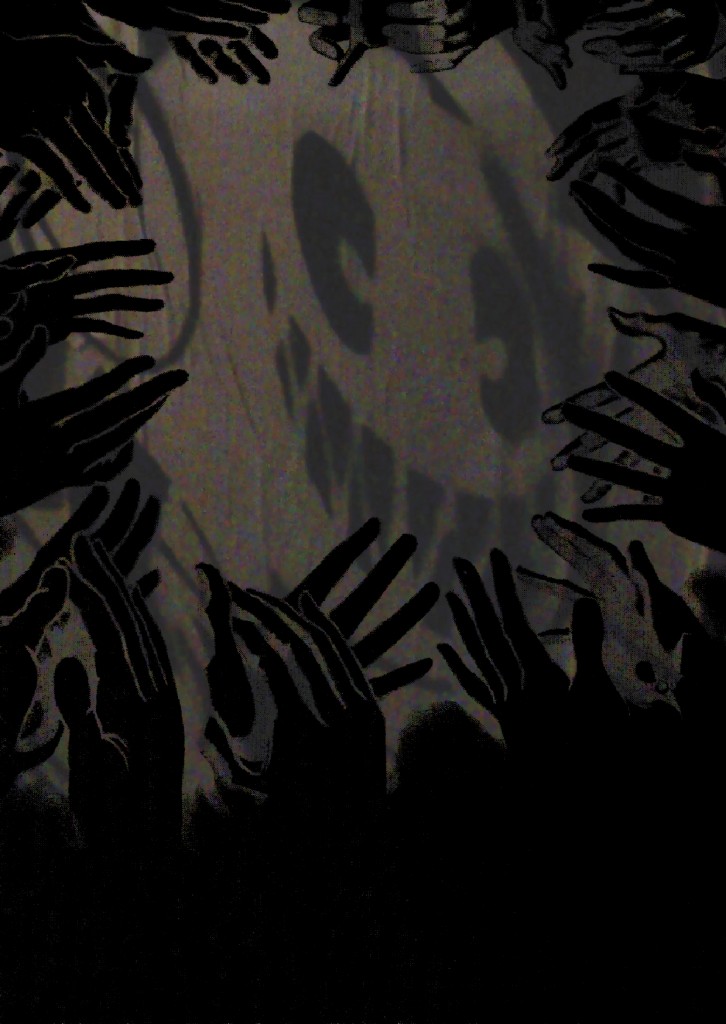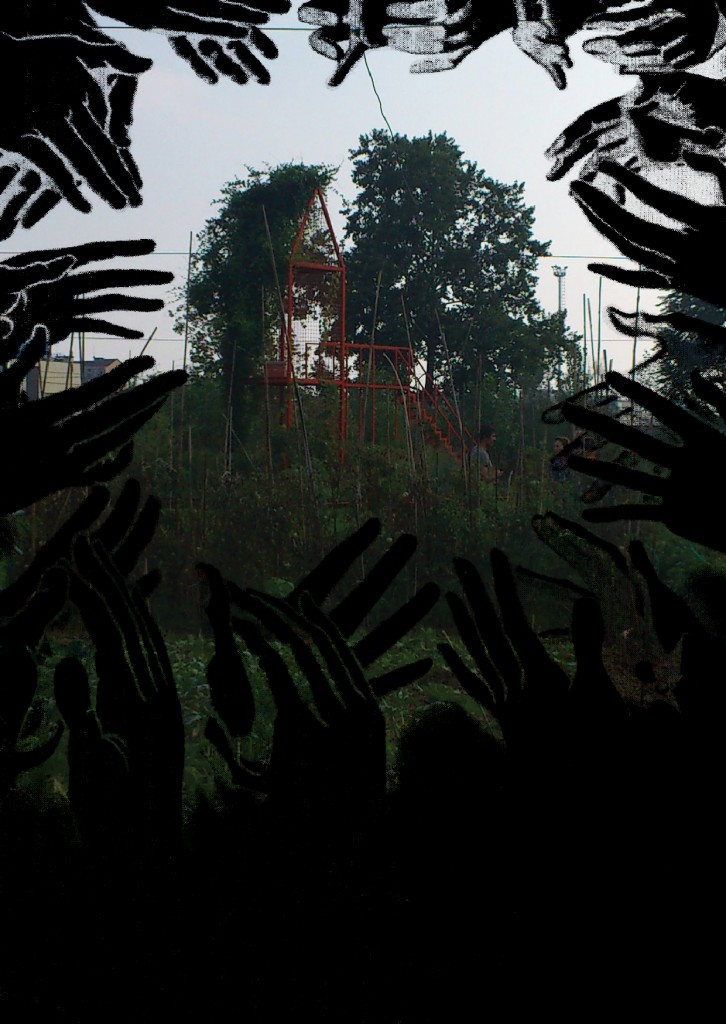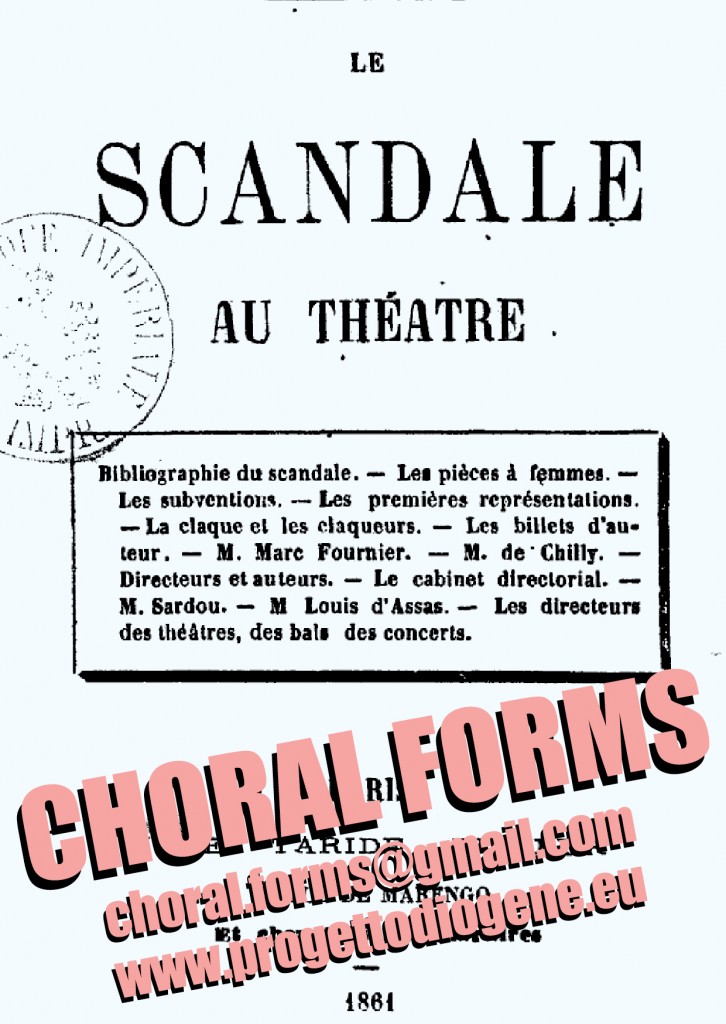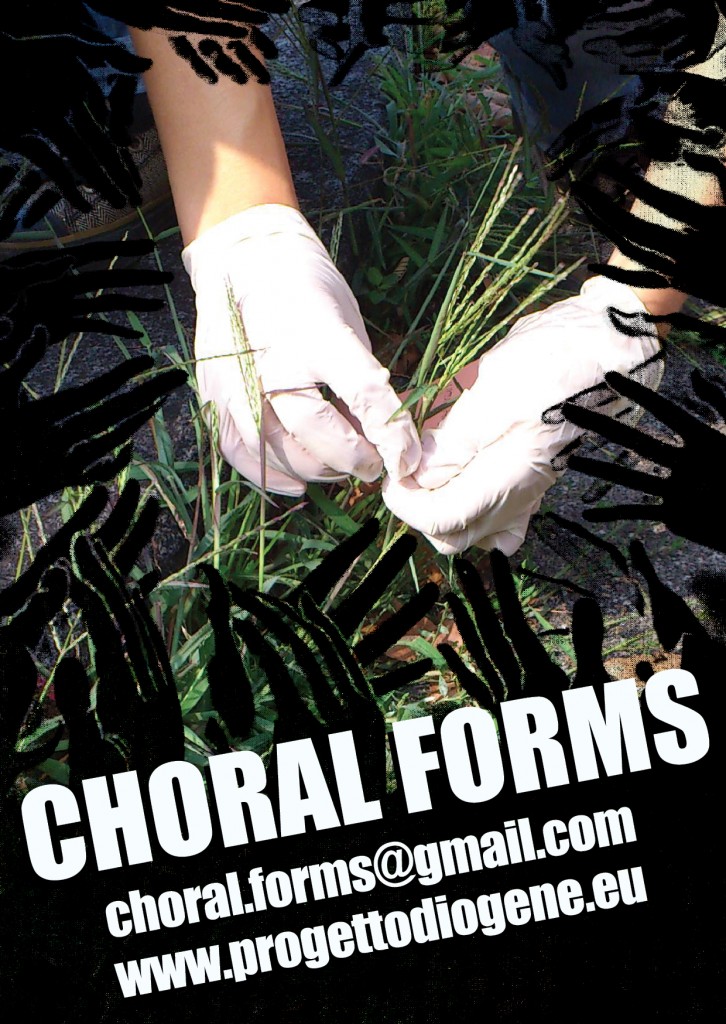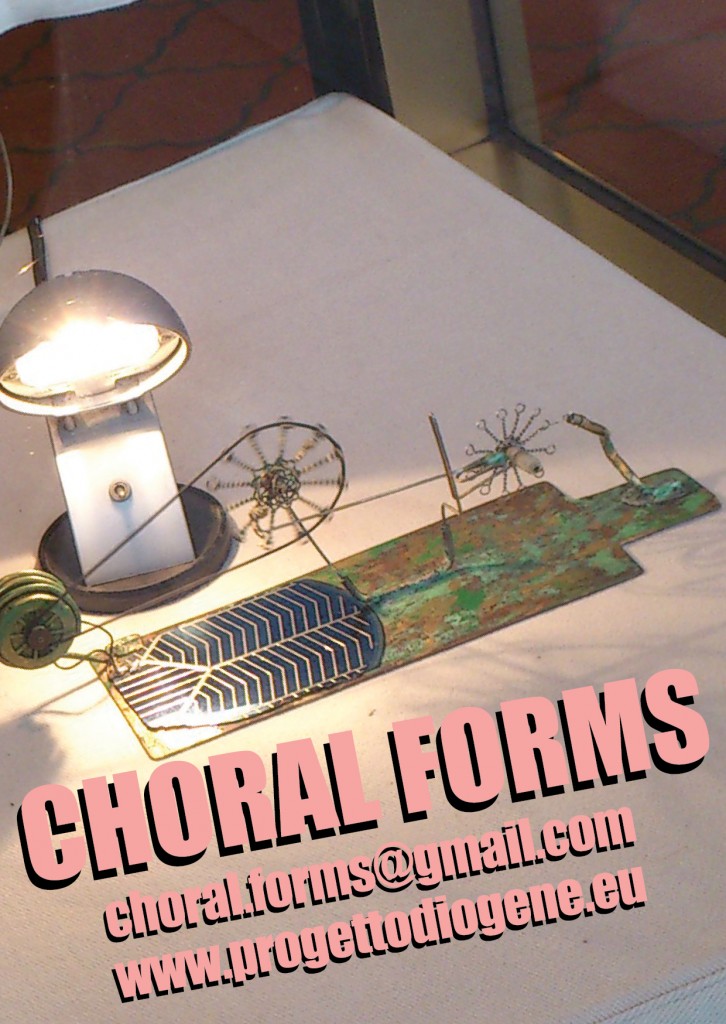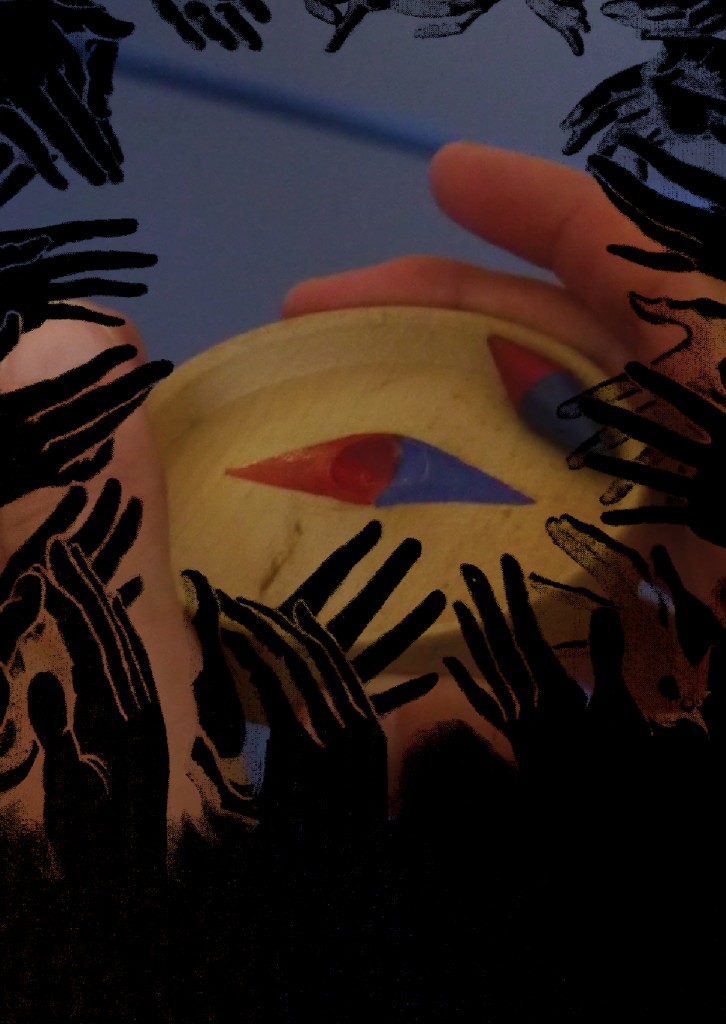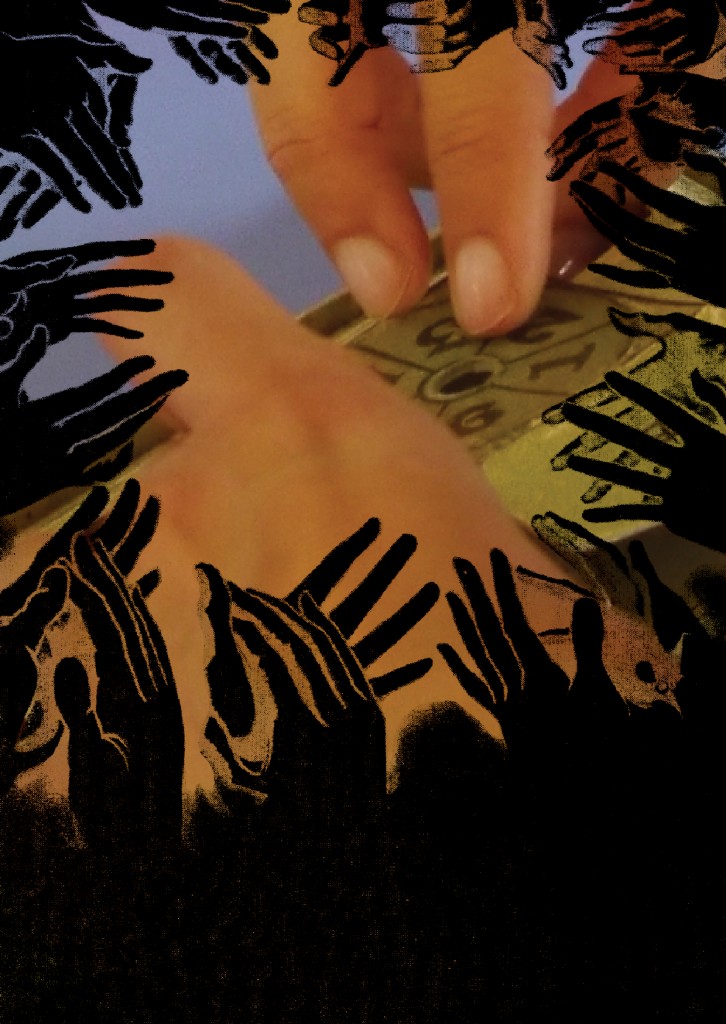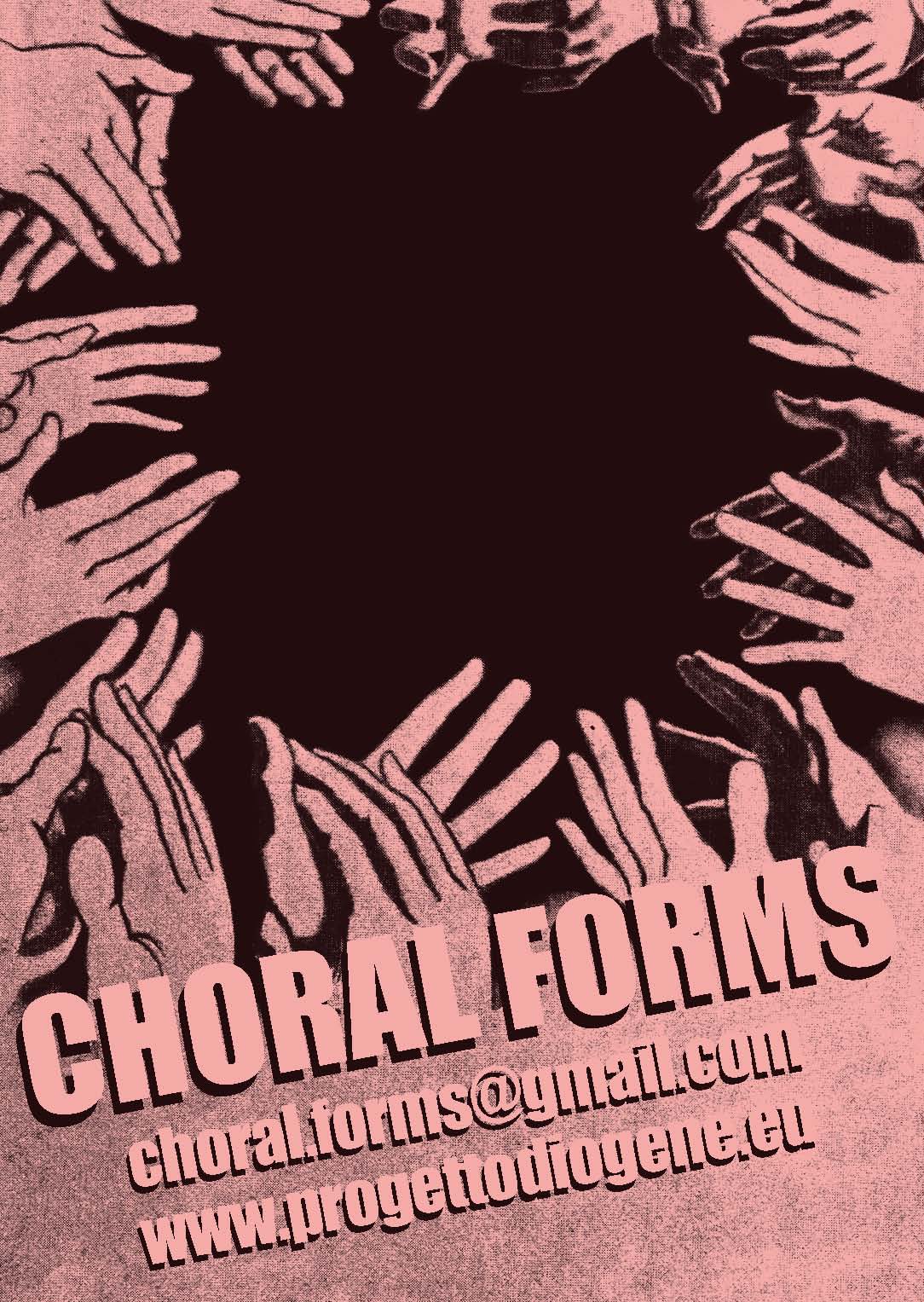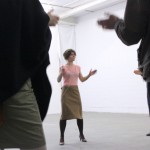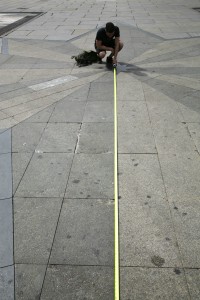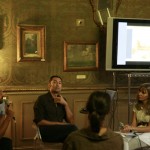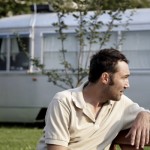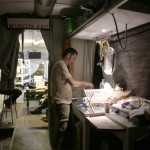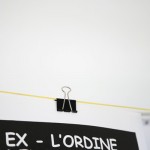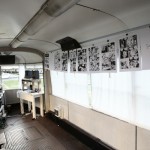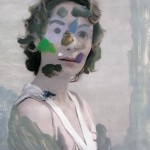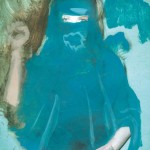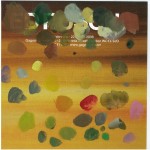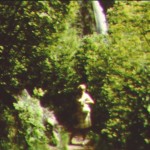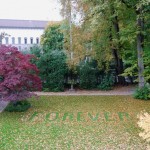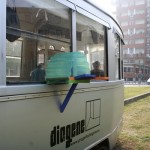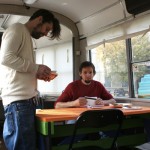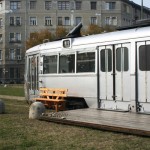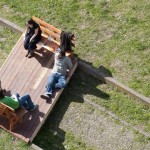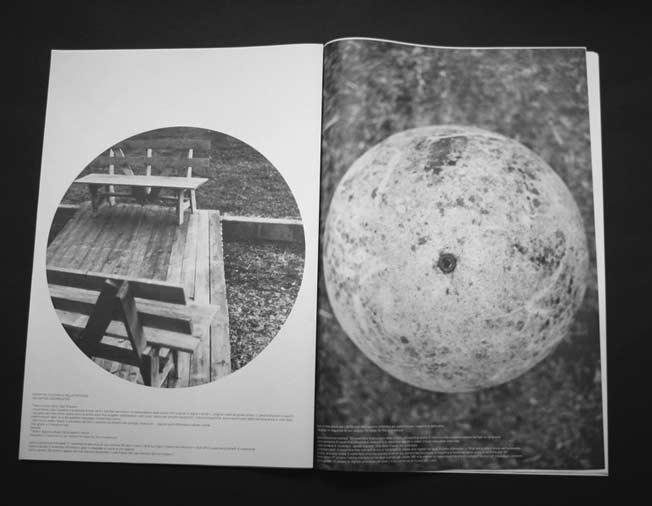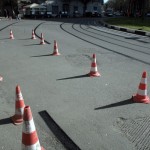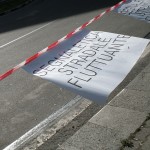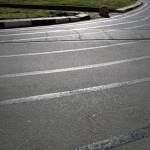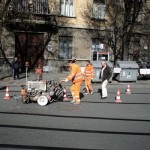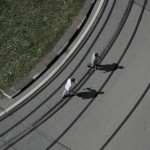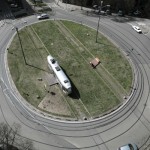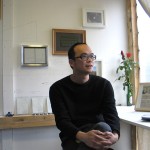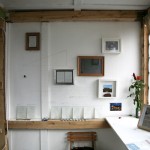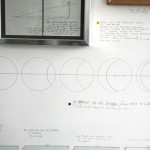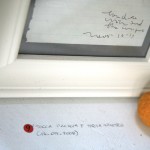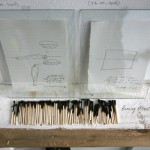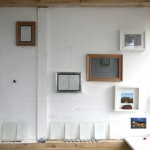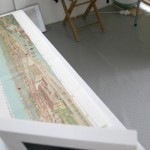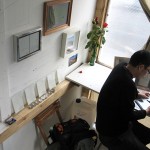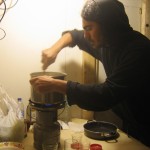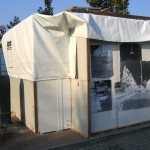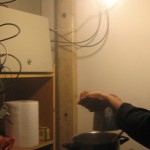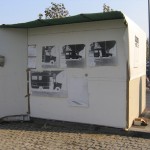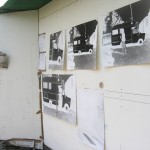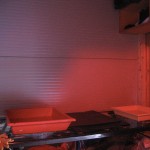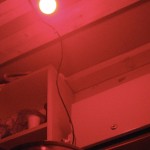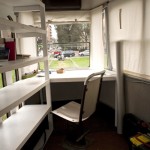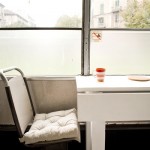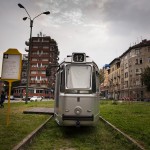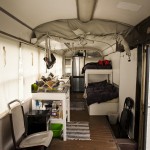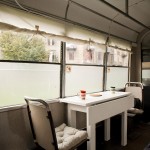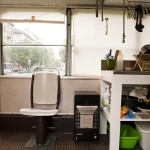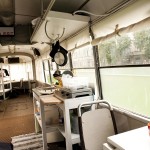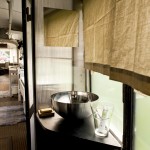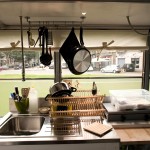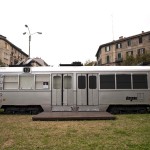RESIDENCY 2015
CALL FOR ARTISTS – UPCOMING
2014 JAIMINI PATEL
JAIMINI PATEL
JAIMINI PATEL IS THE WINNER OF THE DIOGENE RESEARCH SCHOLARSHIP AND THE BIVACCOURBANO_R RESIDENCY PROGRAM
Jaimini Patel, born in England in 1974, was proclaimed the winner of the Diogene Bivaccourbano_R 2014, the eighth edition of the international competition organized by the Diogene Project in support of artistic research to be carried out in the Turin area.
The selection was made by a committee composed of the artists of the Diogene Project (Franco Ariaudo, Andrea Caretto, Manuele Cerutti, Luca Luciano, Laura Pugno, Raffaella Spagna, and Cosimo Veneziano), who assigned the London-based artist access to the consolidated half-year residency program of Bivaccourbano, beginning in September in the Diogene tramcar located on the roundabout island in Corso Regio Parco. In addition to the opportunity of staying in Turin to develop his work, Jaimini Patel will receive a research grant to support her costs and a studio where she can work on the development and execution of works. This is an award that, on the one hand, has evolved and is structured through a research grant (for the first time divulged with an official international open call competition), and on the other, confirms the determination of the Diogene Project in recognizing the strategic importance of the artists and their visual research for the development of the territories on the basis of cultural and social inclusion of the general public through artistic activities.
In the next six months, Jaimini Patel will develop a specific project for the places and architectures that will be hosting her, starting with considerations of research on materials and everyday objects and their capacity to change over time, in order to attract the viewers’ attention concerning their consistency, history, and relationship with the surrounding environment. In line with her path, Patel will attempt to study the balance that is triggered between nature, people, objects, and culture as parts of a whole viewed from a dynamic and evolutionary diachronic perspective. In this creative process, it will be important for her to meet with local artists and craftsmen, a dynamic that is facilitated by the mediation skills of the members of Diogene Project with the institutions and situations in Turin.
STATEMENT
My work explores the non-linguistic expressiveness of matter. I employ slight interventions to materials and spaces to reveal the ability of matter to hold memories or associations and examine how these can be transformed, shifted or even removed. I endeavour to activate materials by utilising their physical qualities and behaviour, or by altering their form or placement. When the function of a material or where it belongs is transformed, the dissonance between its past and present becomes amplified. I am interested in moments of anticipation created by the potential for the work to change, collapse, or become unstable and the interplay between chance and intention.
I am aware that the decisions I make are not entirely mine – they ensue from a conversation that oscillates back and forth. Materials contain a wealth of information that can be revealed or withheld. I probe to ascertain the nature of their memory by drawing attention to the gaps between what they appear to be and what they are.
Artist’s diary ☛ Jaimini Patel
2013 PESCE KHETE
PESCE KHETE
Diogene group is pleased to invite you to the Pesce Khete Open Studio. Pesce Khete (1980, lives and works in Rome),is the artist selected for the residence Diogene Bivaccourbano 2013. Now in its seventh edition, the program Bivaccourbano this year takes a new direction, ushering in a new formula which is close to the ‘fellowship’, offering the selected artist the time and financial support necessary to conduct a medium term research (six months). Firmly convinced of the strategic value of research support, during this difficult time for culture, we decided to give out a strong signal and contribute actively in support of Italian art research.
This new mode gives the public the opportunity to get in touch not just with a new project, specially developed during the residency, but to relate to research as much as possible free from external factors, dealing only with those that are the limits that the ‘artist himself puts into his own work.
The artist, as well as to have the Diogene’s wagon tram, this year can also take advantage of an atelier to organize the working days. The artist chosen for this edition operates mainly with the medium of painting that interrelates with photography (analog). Pesce chases a spinning sensation generated by recognizing its limit in not being able to grasp the object as a whole. This extreme close relationship with the object calls into question the very boundaries of his works, and their maiking. Triggering a movement opposed to research that confirms the very boundaries of painting and its object, Pesce can effectively call into question elements such as composition, content, gesture and sign.
This is the way Pesce Khete defines his period in residence:”Diogene is the premise, research and refusal of inessential. My work is a stubborn research in the meanders of painting, without losing sight of a balance with photography. During my residency period, I will focuse my ener- gies on yet another questioning of my doing and my progress. Divid- ing as a start an initial enlargement of the possibilities of content and style, I seem to reach the destruction of the composition and its implacable return
Pesce Khete was born n Rome in 1980′ and he’s both Swiss and Italian citizen. Among his solo exhibition: “sulle river” and “In quality like he once” at The Flat-Massimo Carasi Milano, “Horst der Künstler” at ” FARNESPAZIO Milano/Bolo- gna, “Ludwig aus der Zeit” at Ex-Cucine del Monastero dei Benedettini Catania, “Tennis” at CARS Omegna, “Pesce Khete” at MARS Milano, “De Alpibus ad Carthaginem Novam” at Centro Cultural Ramon Alonso y Luzzy Cartagena, “Pesce Khete” at Galeria Magda Bellotti Madrid. Among his latest group exhibition: “The Idea of Realism” at American Academy of Rome, “Landina” at CARS Omegna, “Altered Translation” at Car Projects Bolo- gna, “El Ojo del Mirlo” at Galerìa Isabel Hurley Malaga, “If you can hold your breath” at Ceri Hand Gallery Liverpool, “Hidden” presso Galerie Van der Stegen Paris.
2012 AUDREY COTTIN AND GERALDINE GOURBE
AUDREY COTTIN AND GERALDINE GOURBE
LA VERIFICA INTUITIVA
Audrey Cottin & Géraldine Gourbe present, ‘La Verifica Intuitiva,’ a 45 minute cinematographic-edition live and in preview at Merz’s Foundation on October 31st at 7pm.
A cinematographic-edition is a collaborative and performative form addressing the ways in which moving images – from magic lanterns to youtube posts – perpetually re-draw the lines between those represented in the images and those experimenting with them, thus continually reconfiguring the space-time, both fictional and live…
Audrey Cottin & Géraldine Gourbe
Doing and Undoing Performance : from pooling collaborative actions’ accounts to the hypothesis of choral forms.
Doing and Undoing Performance:
Happening, performance or body art are traditionally represented as a tool to exacerbate the artist’s body or intimacy. Concepts like exaggerated narcissistic postures in Amelia Jones’ work or Rebecca Schneider’s explicit body, reactivating a historiography of neglected works to be seen in the perspective of the political concept of agency, focused our attention on the artist-producer figure: the performer.
Audrey Cottin (artist) and Geraldine Gourbe (philosopher) will take some short cuts here to propose a history, that is, if not alternative, parallel, of performance’s ideas and uses -actions and documentations- starting from an ethical concern in collaborative practice.
from pooling collaborative actions’ accounts…
In the pattern of Diogene Bivaccourbano residency, Géraldine Gourbe will go back to Allan Kaprow’s heuristic revolution at the moment of his discovery of feminist pedagogy at CalArts(Feminist Art Program). He quoted it in 1983, during his unpublished long speech next to the feminists Moira Roth (Art historian) and Suzanne Lacy (performer). This one admits she has for longtime undervalued her private collaborations’ influence, the informal, the latent, the unexpected, the tacit ones, etc… with colleagues and friends, on the genesis of her performative processes. Insofar as these collaborations did not fall within the work commissioned by Art Institutions, in Kaprow’s opinion they couldn’t be fully qualified as art works. Subsequently, these collaborative actions, far from being minor, revealed themselves as convenient circumstances (kairos) for experimentation in participatory art. According to the artist, these practices, which are settled under specific circumstances, and apparently marginal in relation to the artist’s or author’s purpose, had found with time their place at her work’s core.
In guise of text edition, and conference-performance, starting from archives and critical texts, Géraldine Gourbe will propose Un-curating the Archives of the Un-artist: Allan Kaprow, inspired by Roland Barthes’ concept: idio-rhythm. During his workshop on living together, held at the College of Philosophy in 1976-77, Barthes introduced on the scene the sensible ideal of idio-rhythm, that is harmoniously pooling distances between the self -with its own rhythm- and the others -a living together relationships’ care.
Together with Géraldine Gourbe, Audrey Cottin will work on pooling her iconographical archives, a corpus of texts related to the Claque during the 19th century, and her private documentation and reflections related to her clapping groups.
Since 2007, Audrey Cottin researches on enthusiasm as a possible practice. In 2009, the applause gesture appears as summarizing her research in the archives of the French National Library. The artist begins to organize Clapping Groups, real works-events taking place in several cities and several contexts: museums, schools, alternative places …
This simple, non verbal and non-coded, communication creates a collective moment that is played by participants rather than in the artist-audience relationship. It is not to applaud for a particular reason, but to celebrate celebration.
…to the hypothesis of choral forms
Relying on the two editorial times of Clapping Group, and Un-curating the Archives of the Un-Artist: Allan Kaprow, Audrey Cottin and Géraldine Gourbe mean to propose the hypothesis or, better, to pool the sensible and ethical ideal of Choral Forms.
Choral Forms will pool skilled and unskilled people, who accept the theoretical and plastic exchanges to develop a form that doesn’t depend just on the authorities and on the author’s properties, but on Choral Forms multiple authors-producers. This is pooling individuals within a sought and ephemeral community.
According to Choral Forms’ specific activations, individuals in collaboration will share and develop a sculpture, a text, an image, a performance, an installation, an exhibition… and, why not, permaculture activities.
During Diogene Bivaccourbanoresidency, Doing and Undoing Performance will be thus a platform for untimely exchanges (F. Nietsche), idio-rhythm pooling (R. Barthes), creative poaching (M. De Certeau), and bricolage tales (C. Levi-Strauss).
Audrey Cottin and Géraldine Gourbe, July 2012, Stockholm-Paris.
2011 GRAHAM HUDSON
GRAHAM HUDSON
Graham Hudson( Sussex, 1977) is the winner of the Diogene Bivaccourbano V edition.Besides the very interesting body of works, the jury appreciated mainly the methodology based on the experience, on the research, on the manipulation of the materials and the relationship with the environment where you work on.
The artist, indeed, works reflecting on the materials, on the temporary architectures, on the building possibilities, trying to investigate the entropic character of certain elements and on their possibility to be perpetuated over the time through continuous transformation.
The artist recently completed a six month period within the redevelopment of London’s Kings Cross, as the changing construction site acting as his studio space. In Austin Texas a site-specific installation invited over 150 musicians to perform public rehearsals inside Hudson’s structure.
Together with a group of Turin-based artists (Cornelia Badelita, Francesca Ferreri and Yael Plat) with whom he collaborates on a weekly basis Graham has set up a project which he calls the “Sondaggio-Torino”(Turin survey).
This is how the artist describes the project: “Diogene Bivaccourbano is located 1.5 km North East from the city centre of Turin. This distance is the radius for my Sondaggio-Torino within this circumference the city becomes a studio space and public exhibition space for Autumn 2011. The result of the residency will be an archive of a period of time and space, with the Survey acting as the framework for the development, and execution of Hudson’s actions, embracing collaboration, chance and chaos. Including video, performance and permanent works”.
The project can be followed here: http://www.grahamhudson.com/DIOGENE
Graham Hudson, Sussex 1977, lives and works in London.
Solo Show: 2011, Arthouse, Austin, Texas, 2010, ZINGERpresnets, Amsterdam, 2009 Monitor, Rome, 2008 Locust Projects, Miami
Group Show: 2011 Con Amore – Djurhuus Collection, ARoS, Aarhus Kunstmuseum, DK, British Art Now: Saatchi Gallery in Adelaide, Art Gallery of South Adelaide, AUS, 2010 Glow, VanAbbe Museum, Eindhoven, Languages and Experimentations, MART, Trento/Roverto, IT, Mutiny seemed a probability, Fondazione Giuliani, Rome, IT, 2009, Frieze Sculpture Park (with Monitor, Rome) 2008, 6 of 1: Performance and Sculpture, Camden Arts Centre, London, UK
The artists website is linked here: www.grahamhudson.com
2010 LUCA BERTOLO
LUCA BERTOLO
Luca Bertolo (Milano, 1968). Ha vissuto a São Paulo, Londra, Vienna e, per lungo tempo, a Berlino. Dal 2005 risiede nuovamente in Italia. Dopo essersi quasi laureato in Scienze dell’Informazione all’Università Statale di Milano, si è diplomato in pittura all’Accademia di Belle Arti di Milano (1998).
Il suo lavoro è incentrato sulla pittura e sul disegno, intesi come mezzi sofisticati per una riflessione sui modi della rappresentazione. Utilizza anche il video, il collage e la scrittura. Due modalità apparentemente antitetiche connotano le sue opere: un approccio concettuale e analitico da una parte, e una pratica legata ai materiali e ai linguaggi specifici dall’altra. In generale si interessa di tutti i meccanismi attraverso cui un linguaggio si fa e si disfa.
Ha esposto in istituzioni pubbliche tra cui Kettle’s Yard (Cambridge), Centro di Arte Contemporanea Palazzo delle Papesse (Siena), MACRO (Roma), Centro per l’Arte Contemporanea Luigi Pecci (Prato), 176 / Zabludowicz Collection, (Londra), Kunsthaus Tacheles (Berlino), uqbar (Berlino), Villa delle Rose – GAM (Bologna), Assab One, (Milano), Prague Biennale (Praga), MARS (Milano) e in gallerie private tra cui The Front Room Gallery (New York), SpazioA (Pistoia), Arcade (Londra), MARS (Milano), Wilde Gallery, (Berlino), Galleria Alessandro De March (Milano)Open Source Gallery (New York).
Ha ricevuto una borsa di studio annuale dalla Pollock-Krasner Foundation (New York, 2000). È stato Artist in Residence all’interno del programma del Cancellierato Federale Austriaco (Vienna, 2005), all’Hotel Pupik (Schrattenberg – A, 2007), e a Villa Sträuli (Winterthur – CH, 2008).
PROGRAMMA della Residenza 2010
ABSTAND – POLITIK / DISTANZA – POLITICA
giovedì 16 Settembre CIRCOLO DEI LETTORI Via Bogino, 9 Torino In dialogo con Davide Ferri (curatore), Luca Bertolo (artista) parlerà del suo lavoro e d’altro. Per l’intera durata della conversazione Bertolo utilizzerà una lingua straniera (ci sarà un traduttore), un artificio scelto affinché difficoltà, ritardi e incertezze mettano da subito “in scena” alcune forme di distanza, compresa quelle tra l’artista e il suo paese, tra l’artista e sé stesso.
OPERE
2009 NICO DOCKX, POL MATTHE', HELENA SIDIROPOULOS, JOCHEM VANDEN ECKER
Nico Dockx, Pol Matthé, Helena Sidiropoulos, Jochem Vanden Ecker
“We are invited by the artist group Diogene to do a residency in Turin. This residency-program for artists is mainly about living and working in a self-sustaining structure. The structure is a tram localized on a roundabout in the Sicilian part of Turin. During our project ‘Rotonda Fluttuante’ we work with this public space, which we temporarily occupy and share with our neighbors: pigeons, dogs, dogwalkers and now, even with families, children, older people etc. Our idea is to propose possible transformations for the roundabout, to activate it in different ways through creating structures physically but also mentally. Since the beginning of our residency in Turin we have involved the residents who live around this area in this process, but also fellow artists, architects, etc. to insert their ideas, wishes, utopias and critics by sending us a postcard with these reflections. We will integrate these ideas together with our own and create some sort of a masterplan for the roundabout that we will give to the city, a plan that interweaves suggestions such as a flowergarden and a playground. All our research, experiences, ideas… of living and being at the Rotonda will be transformed into a publication which will be available soon. Meanwhile we try to intervene already by small actions such as creating benches for people to sit on, by living and working in the public space, by creating an address, by creating a workshop where we have connected art-students from Antwerp (Belgium) and Torino who experimented together about possible structures for a playground, by live input of the Italian curator Maurizio Bortolloti through a lecture about (‘occupation’) an exhibition in a Palestian village in Israel, by beginning a possible garden, and by bringing art into the streets. Since we are here we try to attract people by inviting them to engage with the space. We want to connect the roundabout with the surrounding area and its inhabitants. We invite you to two events where we bring art into the streets. On Thursday 19th of November we will organize a contemporary, experimental sound performance that interacts with the environment. And on Friday 20th of November we bring a museum in the streets: we will do a screening of a selection of the video collection of the local contemporary museum Castello di Rivoli. The art films/videos we would like to show relate to our own actions/practice that catalyzes space (socially and architecturally).
Everyone who is curious is welcome to join us these evenings”.
Nico Dockx, Pol Matthé, Helena Sidiropoulos, Jochem Vanden Ecker
Open Studio 20.11.2009
ROTONDA FLUTTUANTE
08.10-23.11.2009 / 28.03.2010
Corso Regio Parco x Corso Verona, I-10152 Torino project/ concept/ images: Nico Dockx, Pol Matthè, Helena Sidiropoulos & Jochem Vanden Ecker image on page 12: Valerie De Ghellinck texts: Nico Dockx, Egon Hanfstingl, Kris Kimpe, Michele Lamanna, Pol Matthè, Bruno Munari, Hans Ulrich Obrist, Douglas Park Diogene group, Helena Sidiropoulos, Jochem Vanden Ecker, Cosimo Veneziano, Louwrien Wijers & neighbors design: whit Jean-Michel Meyers curious021 ( a newspaper) Curious, Progetto Diogene, and the artists, 2010 500/500
Un sasso sferico gettato nell’acqua Un sasso sferico gettato nell’acqua cerchi concentrici onde si allargano e svaniscono Un sasso cubico cerchi concentrici si allargano e svaniscono*
Bruno Munari, Verbale Scritto, Pro Memoria, p.8, 2008, Bruno Munari & Corraini Edizioni
curious 021 (a poster)
2008 PAK SHEUNG CHUEN
PAK SHEUNG CHUEN
Touch the Historical City: Torino From Everyday Objects to Eternity
Key words
Circle, Sun, history, shape, river, time, horizontal line, vertical line, triangle, water, perpendicular, stone, feather, light, city, street, road, directions, brick, buildings, mountain, church, columns, square, door, fire, house, mirror, shadow, light, heat, safety, electricity, energy, communication, songs, friends, Moon, flowers, food, protection, number, sequence, books, language, distance, boundary, death, body, touch…
Statement
This is a box to record my life and thinking while I was living in Turin between 12/Oct – 2/Nov. The house was built in the center of the Turin. I walked outward everyday, in different directions, until touching the boundary of the city. I think this is a way to have a more complete vision on Turin. After a week, I found a major characteristic in this city: It is very difficult to get lost in Turin. Then I initiated my first project: Lost in Toino. It is a game to play with the city planners and designers, and also my memory and survival instinct. The PO River, which is nearby my house, inspired me a lot on my artwork. The flowing water always bring me to think of life, time, history, status of a man… The second week, I focused on the River and the environment beside it. I touch the water and use the water to make some artworks, such as the video work “Historical Shape” and “Triangle”… The process of living in the green house itself is an artwork. It is a “living sculpture” made by Diogene group artists. I am one of the “living elements” in their sculpture. Start form light and heat, I need to learn about every basic needs of a human being. I need to build up my habits. I need protection and friendship. It is the evident of my living. It also includes some artwork on my daily life. The Open Studio will be on 5:00pm of 30/Oct.
Design of the shelter employed structural elements, panels and furniture coming from waste materials thrown away after exhibitions, fairs and other events connected with contemporary art. Construction of a shelter that would eventually become the home for Pak Sheung Chuen in Piazza Gran Madre in Turin was a symbolic act designed to demonstrate our desire to share and exchange. These conditions were an offering not only to the artist but also to the entire artistic community and ultimately to the whole city.
The shelter, nicknamed the “green house” by the artist, was a new way for him to enjoy the city. By eliminating the superfluous that clutters up our homes and our modern life styles, we can create a space for reflection. Pak Sheung Chuen, who takes reflection on actions and habitual places in our lives as his starting point for artistic experimentation, transformed what was designed to be a simple shelter into a genuine experience to give life to new ways of interpreting the urban landscape. Here we are not faced with a public space that invades a private one. Here the opposite occurs: the rhythm of life beats to the frenetic beat of city life. And this is where the “green house” becomes an observation point between inside and outside.
Pak Sheung Chuen focused his experimentation on the relationship between object and meaning, and the willingness to invent a language made from habits, which sometimes took on a new meaning because they were de-contextualised from everyday life. His way of thinking begins with the known and works its way towards the unknown, or at least, pushes towards the “non-conventional” known. The key point here is to question assumption. One of his first pieces created on location: “Lost in Torino”, which takes place among the city’s streets and buildings failed immediately. It wasn’t possible to realise it because the layout of the city, built on a orthogonal grid together with the numerous spatial references given by certain monuments and the “views” offered by the urban landscape, led to the failure of his attempt to get lost. The modality of the residence was very stimulating for Pak, who helped us to understand what the strong points and weaknesses of this project could be, also from a practical standpoint. By considering himself as a “living sculpture” that lives in a “work of art” designed by other artists, Pak Sheung Chuen decided to put himself to the test with regard to the pleasant and difficult aspects associated with living in the green house. This allowed us to observe how the bivouac worked, without allowing space for compromise or uncertainties. Pak decided to adapt to the alternating choice of either light or heat (according to the sun that feed the solar panel), in this way fitting in not only with the artificial forms and the rules imposed on him by the workings of a highly #anthropised urban environment, but also to the natural resources available in the city, such as water, light, air, warmth, etc. Being forced to re-examine his needs from scratch without taking anything for granted made the contents of Pak’s Turin project much richer and more compelling. As he himself said: “This is a box to record my life and think about when I lived in Turin from 12 October 12 to November 2, 2008. The house was built in the centre of Turin. Every day… I walked in different directions until I reached the outermost limits of the city. (…) The process of living in the “green house” is in itself artistic. It is a “living sculpture” created by the group of artists Diogene. And I am one of the “living elements” in their sculpture. Beginning with light and heat, I need too learn all the basic needs of a human being. I have to reconstruct my habits. I need protection and friendship.”
Pak Sheung Chue was born in Fujian (China) in 1977. He immigrated to Hong Kong at 7 years old. He lives and works in Hong Kong now. Pak is a conceptual and performance artist who is well known as a regular visual art columnist in a local newspaper “Mingpao”. His artwork is conceptual, poetic and humor. Each artwork is a deep thought on everyday life. He was awarded an Overseas Exchange Prize (Chinese Performance Art) from Macao Museum of Art in 2005. He got the Lee Hysan Foundation Fellowship in 2006 from Asian Cultural Council supporting him to work in New York. He published 2 books: Odd One In: Hong Kong Diary and See Walk What on 1 July.
1977 Born in Fujian, China.1984 Immigrated into Hong Kong. 2002 Graduated from The Chinese University of Hong Kong, B.A., Major in Fine Arts, Minor in Theology. 2002 Setup the“2nd Floor 5 Sons Studio”in Fotan with 4 classmates.2003 Started to pose artworks on Mingpao Daily Newspaper. 2004 Columnist of the (Sunday) Mingpao (明報) Daily Newspaper (until 2006). 2005 Published 2 books: “See Walk What on 1 July” and “Odd One In: Hong Kong Diary”. Won an Oversea Exchange Prize in the exhibition: “Inward Gazes–Documentaries of Chinese Performance Arts”(2005) Oversea Exchange Prize, Macao Museum of Art. 2006 Participated in a number of oversea exhibitions, such as “Busan Biennale 2006”. Awarded the Lee Hysan Foundation Fellowship (12 months in USA) of Asian Cultural Council. 2007 ISCP residency in New York
WORK2007 GIORGIO ANDREOTTA CALO' e MARIO TOME'/ beta project
GIORGIO ANDREOTTA CALO’ E MARIO TOME’
The artist Giorgio Andreotta Calò, with help from the artist Mario Tomè, was invited to take part in the pilot project event. Andreotta Calò chose one of the sites in the city of Turin, selected by the Diogene. He moved the structure that had been his live-in studio for one year within the studios of the Fondazione Bevilacqua La Masa in Venice. This construction – assembled from left over bits and pieces from Pavilions built for the Venice Architecture Biennial was reconstructed in an open-air site in Turin, in the pedestrian area of Lungo Dora Savona. At the end of the weeklong residence, the structure was transported to the Lingotto Fiere during the Artissima fair where it served as an info point for the official launch of the Diogene bivaccourbano project. During the residence period in the city the two artists produced a photographic project that was presented for the first time at the Diogene stand at the Artissima fair.
Giorgio Andreotta Calò (Born: Venice, 1979)He graduated in 2005 at the Venice Academy discussing a thesis focused on Gordon Matta Clark. He develops a research dealing with radical architecture. He uses the urban setting as a space of both working and acting, often handling with abandoned or under construction buildings. In 2006 he realized a bright intervention on the Bosnian Parliament Tower in Sarajevo. During the XII Higher Course of Visual Arts of the Antonio Ratti’s Foundation he was a student of Marjetica Potrc; he is one of the artists living in the residency at Amsterdam’s Rijsakademie for the two-year period 2009/2010.
Mario Tomè (Born: Belluno. 1980) His work ranges from photography, video painting and sculpture to electronic music, which he plays with mainly analogical instrumentation. The theme of the bivouac is strictly linked to his more recent artistic research and will be the topic of his final thesis.

